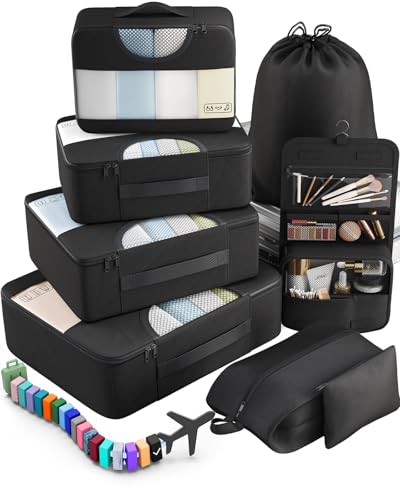On Bonaire, they use Type A, B, and F power plugs and outlets. The voltage is 127V, and the frequency is 50Hz.
So, you’ll definitely need a travel adapter on Bonaire. Not all their plugs and outlets are the same as our Type A and B back in the States.
Quick Overview of the Plugs on Bonaire:
- Plug type on Bonaire: A, B, and F
- Standard voltage: 127V
- Frequency: 50Hz
- Need a travel adapter? Yes, you do need a travel adapter
- Need a voltage converter? No, you won’t need a converter here
- Recommended plug adapter: Vintar Universal Travel Adapter Kit
All details on this page are sourced from official power regulations, international standards like the IEC, and up-to-date feedback from travelers who’ve been there.
The Only Travel Adapter You’ll Need on Bonaire
Not all travel adapters work everywhere. We don’t sell them, but we’ve spent hours comparing the best options for Bonaire—factoring in voltage, plug types, and reliability. This one came out on top:
Recommended Travel Plug Adapter
by 1,000+ travelers on Amazon
Forgot your power adapter and you’re already traveling? It’s not the end of the world—most airports and local stores sell them. But packing your own means you’re ready to go the moment you land, with no extra stops needed.
Rabaul travelers frequently also visit Curaçao and Aruba. Adapter types may differ.
Power Outlets on Bonaire
On Bonaire, they use Type A, B, and F power plugs and outlets.
Type A

Type A outlets have two flat prongs and no grounding pin.
Type B

Type B outlets have two flat prongs and a grounding pin. Type A plugs will also fit.
Type F

Type F outlets have two round prongs and grounding clips on the sides. Type C and E plugs will also fit.
Do You Need a Voltage Converter?
You can skip the voltage converter if your device’s voltage matches the country you’re visiting. On Bonaire, the voltage is the same as in the U.S., so you’re all set!
To avoid any electrical issues, always check the power label on your device before traveling. If it states “100-240V, 50/60 Hz”, your device is compatible with multiple voltage standards and won’t require a converter. Most laptops, tablets, cameras, and rechargeable devices support this.

Which Travel Devices May Need a Converter?
Looking for a solid voltage converter? These highly rated options are a good place to start.
| Device | Need Converter? | Notes |
|---|---|---|
| Phone | ❌ No | Most modern phone chargers are dual voltage (100–240V) |
| Laptop | ❌ No | Check the power brick label for 100–240V |
| Hairdryer | ❌ No (usually) | High wattage; many models are not dual voltage |
| Electric toothbrush | ❌ No | Most models are 110V only |
| Camera / DSLR | ❌ No (usually) | Most chargers are dual voltage |
| Power bank | ❌ No | Charges via USB, adapter is enough |
| Electric shaver / trimmer | ❌ No | Older or cheaper models may not support 230V |
| Tablet / iPad | ❌ No | All models are dual voltage |
| Portable fan | ❌ No | Many models are compatible with 110V |
| Game console | ⚠️ Check voltage | Newer consoles like PS5 and Xbox are often dual voltage — check to be sure |
| Bluetooth speaker | ❌ No | Charges via USB |
| E-reader (Kindle, etc.) | ❌ No | USB charging only, no converter needed |
Top Travel Essentials to Pack
From power banks to packing cubes, a few small add-ons can take the hassle out of travel. Here are some favorites.
Digital Luggage Scale
Packing Cubes
Power Bank
More About Bonaire
Bonaire is a Dutch Caribbean island of about 26,500 residents, roughly 50 miles off Venezuela’s coast. It welcomed a record 182,000 stayover visitors in 2024, with nearly a quarter from the U.S. and strong growth year over year. The island famously runs on dive tourism—shore diving is exceptional, reefs start just a few yards off shore, and most snorkelers and divers don’t need a boat. This isn’t a party island; it’s dive-first, nature-led, and quietly luxurious.
The Bonaire National Marine Park protects nearly the entire coastline—including Klein Bonaire and sheltered reefs, seagrass beds, and flamingo reserves. Wildlife is abundant: schools of fish, rays, coral gardens, and even flamingos in salt-lagoon sanctuaries. The terrain on land is dry and cactus-covered, with wandering donkeys, salt flats, and windswept beaches that feel untouched. Outdoor activities include kayaking Lac Bay, kiteboarding, biking salt plains, and guided cave tours in Washington Slagbaai National Park.
For U.S. travelers, Bonaire is a diver’s dream and an easy Caribbean pick. English is widely spoken, U.S. dollars are accepted, and lodging ranges from dive resorts to eco-lodges. Because the reefs are so close and protected, diving or snorkeling is simple—even beginners get spectacular underwater access. If you’re after reefs in top health, windswept nature, and relaxed pace with well-run infrastructure, Bonaire feels both exotic and effortless.
Bonaire uses the same plugs and outlets as Aruba.




